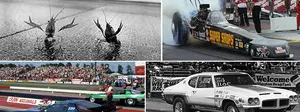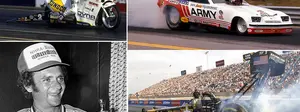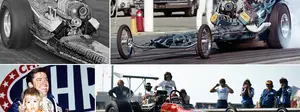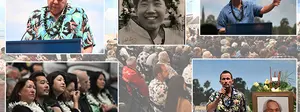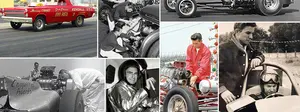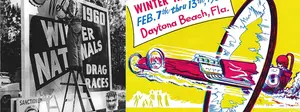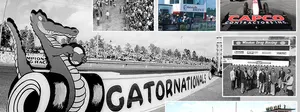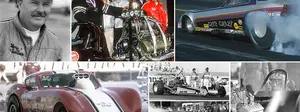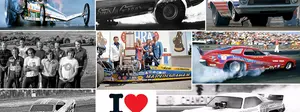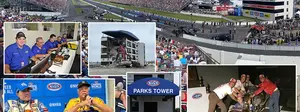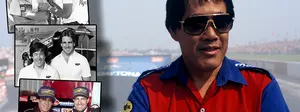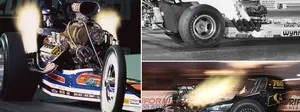Schultz & Glenn: 1971's killer team
 |
Even though the main trunk of the Keeling & Clayton thread continues to grow, today I’m branching out a bit to address growing questions about a guy whose name has been part of the story even though he never drove for the team. I’m talking about Gerry “the Hunter” Glenn, who was inexorably tied to the team by two key races: the 1970 Supernationals, where K&C driver Rick Ramsey defeated him in the final for their lone national event victory, and the final round of the 1971 PDA event at Orange County, where the Schultz & Glenn dragster bested Ramsey in the final.
Glenn is a guy whom I’ve long wondered about but whose career I’d never had a chance to explore. Most folks know that he was the 1971 NHRA Top Fuel champ by virtue of his final-round victory over no less than “Big Daddy” Don Garlits at the 1971 World Finals in Amarillo, Texas, but to many, he is considered one of the great natural Top Fuel pilots.
Validation for that praise certainly comes due to a lengthy résumé of other triumphs beyond his world championship, but perhaps key is that he jumped right into a Top Fuel car in 1965 with no experience and immediately began getting noticed. His first ride was in Ron Winkle’s MagiCar (later Winkle, Trapp & Glenn), and within a month, he was standing in the winner’s circle after an event in Palmdale, Calif. A stunning 7.10 at Irwindale in early 1967 in the Andre, Trapp & Glenn machine brought him more raves, and he diversified into Top Gas with John Rasmussen later that year and racked up a series of big-name wins in that class, too.
In 1968, John Bateman hired him to wheel the Atlas Oil Tool Top Fueler, and together, they won the Division 7 championship. After Bateman opted to move to Funny Car, Glenn first teamed with two-time Top Gas championship tuner Bill Schultz in 1970 and drove in Top Fuel and Top Gas for him. In their first trip to Indy, they fell just short of upsetting the killer twin-engine Top Gas rail of Motes & Williams, then loaned their engine to Jack Jones, who beat Ray Motes in the final.
 Don Garlits red-lighted against Gerry Glenn in the final round of the 1971 World Finals to make the Schultz & Glenn team the Top Fuel world champ. |
The 1971 season, as mentioned, was a tour de force. In addition to running a pair of 6.41s at Lions – the quickest passes in history – and winning the PDA event, they famously beat Garlits in Amarillo. Garlits already had been crowned the AHRA champ and was looking to double up. He had lane choice for the final (6.60 to 6.72) and ran low e.t. in the final, 6.55, to Glenn’s 6.59, but red-lighted. According to Glenn, as told to National Dragster then, he and Schultz had noticed in qualifying that the Tree at Amarillo was a “slower Tree” and planned accordingly. Schultz and Glenn were the final Top Fuel champs to win it with a slingshot, and they never found the same success after joining the switch to a rear-engine configuration. They competed in Funny Car with Jim Glenn (of Shady Glenn fame) for a couple of seasons before opting out, but that ‘71 Top Fueler remains a memorable machine and perhaps a bit of a missing link in the slingshot-to-rear-engine evolution. You only have to look at the photos to see that the engine placement is not that of a standard slingshot.
 It's obvious from this profile photo that the engine in the Schultz & Glenn Top Fueler was moved significantly farther ahead than its peers. |
I was thrilled to hear from Dan Tuttle, whose famous father, Don, built that car in his California Chassis Engineering shop in SoCal’s San Fernando Valley.
“That car had everybody scratching their heads,” recalled his proud son. “It was vastly different from everything else out there. It incorporated all of Schultz's ideas. The wheelbase was unheard-of -- for single-engine cars anyway – and the engine was then moved out to about 46 inches from the then standard of around 32. This combined with the downward angle of the crank centerline necessitated the use of a dry-sump oiling system.
“Since this was in the middle of the first paradigm shift in Top Fuel racing, everybody was rushing back to the chassis shops, either to have their front-engine cars redone or to build rear-engine cars. I think we all know how that turned out.”
 From left, race queen Carolyn Devore, Gerry and Sharon Glenn, and Bill Schultz in the 1971 PDA winner's circle at OCIR. |
 The 1970 Schultz Top Gas car also had a significant engine-location adjustment. |
According to Tuttle, his father was “sort of a silent partner” with Schultz. “Bill would buy the car for a dollar, and when he was finished running it, my dad would give his dollar back. Cheap R&D when you think about it!
“Also, somewhere in the sea of people [in the photo] is my brother Dave, the current proprietor of California Chassis Engineering (now Dave Tuttle Race Cars), who was then 14 years old. Can you imagine being that age and getting to hang out with one of the baddest hot rods on the planet? I was 7 and sleeping in the back of the truck.”
I’ve been pals with Dave for decades, since my first years on the Dragster staff in the early 1980s, so I reached out to him at his popular place of business. As expected, he had the entire story and, as a chassis builder himself, knew the specs by heart. He also confirmed what I had found in other photos in Glenn’s file, that Schultz had a similarly configured gas dragster in 1970.
“After Schultz and Jones had won the Top Gas championship [in 1969], [After the 1969 season,] Schultz turned that car in and got another one from my dad – for a dollar – that went from 175 inches [wheelbase] and the engine out 32 [inches] to 190 with the motor out 40. That set the stage for the Top Fueler. The standard for a Top Fueler then was 200 inches; the Schultz & Glenn car was 230 inches. The engine was indeed 46 inches out, and it really got everyone’s attention when we brought it out to Irwindale for the Grand Premiere.”
"The engine was so far out from the rear end that they had to use a driveshaft from a ’55 Chevy to span the distance (ironically, it was the thing that broke on the first run because the heat-treat was wrong on the coupler shaft), but after that, it was unstoppable. It won 21 races that season. People don’t realize that it was high-gear only and an iron block, and only a few people know that when we beat Keeling & Clayton to win the PDA event, we split the No. 1 cylinder wall and put a rod out, but no one knew because it had a dry-sump system.”
Dave’s familiarity with the specs of the car comes not only from his firsthand experience as a teenager living a dream, but also from running the car after getting it back in 1989 from Paul Gerber, who had bought it from Schultz. “I put all of my stuff into it and ran it for three years. I went to 14 events and made nine finals,” he recalled. “There was still some magic left in it. I was afraid to crash it because it really deserves to be in a museum.
“That car made every other front-engined dragster team out there move the motor out, move the rear end back, or stretch the wheelbase, or all of the above. Shame is that at the end of the year, they were all obsolete, and everyone went to rear-engined cars. That was a crazy time because there was so much progression going on.”
 The 1972 rear-engine Schultz & Glenn dragster did not enjoy the success of its front-engine predecessor. |
(Side note: Mickey Bryant and Todd Hutcheson, who exhaustively covered the front- to rear-engine transformation in their twin books about Garlits' revolutionary Swamp Rat 14, put together a great summary of the slingshot’s demise that they call “March to Oblivion” and was posted on Don Ewald’s amazing We Did It For Love site. Check it out here. [Note: Their graphic about the Schultz & Glenn car says that engine was moved forward 50 inches; that’s obviously a typo -- that would have put it at 82 inches out
















